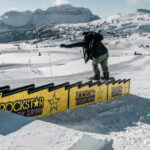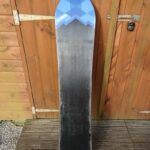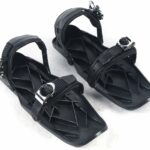Picture this: fresh snow on the mountains, clear blue skies, and you’re ready to tear up the slopes with your trusty snowboard. There’s only one hiccup – your snowboard hasn’t seen action for a while, and you wonder if it needs tuning. This article aims to guide you through the process of tuning up your snowboard, from equipment checks to proper maintenance schedules. You’ll discover techniques to keep your board in tip-top shape and ensure that when you’re zipping down those slopes, your ride is smooth and seamless.
Understanding the Need for Snowboard Tune-up
When you slide down the slopes on your snowboard, you should feel the adrenaline rush, not the struggle against your gear. Keep your snowboard running smooth and efficient by ensuring it’s well-tuned and maintained.
Importance of snowboard maintenance
Regular maintenance of your snowboard not only enhances your performance on the slopes but also prolongs the life of your gear. It also saves you from potential accidents caused by failed equipment. Imagine catching on an edge because the base of your board was not properly cared for. Regular tune-ups prevent that from happening.
Recognizing when your snowboard needs a tune-up
As much as it is habitual for some, others might wonder “When does my snowboard actually need a tune-up?”. Generally, your board needs a tune-up when the edges start to feel dull, when it rides slow or drags even in a good snow condition, or when you see scratches or dings that are deep enough to touch the core of the board.
Benefits of regular snowboard tune-ups
Regular tune-ups not only help to fix the issues you can see, but they also work to prevent future problems from arising. Your board will have a long, healthy and shiny life with better responsiveness, giving you the smooth, fast ride that you crave.
Tools Required for Snowboarding Tune-up
You don’t necessarily need a professional technician to tune-up your snowboard. With the right tools and a little patience, you can do it yourself at home.
Commonly used tools for snowboarding tune-up
The basic tools you’ll be needing for a tune-up include a metal scraper, nylon brush, diamond stone, gummy stone, edge tuner, wax, and p-tex. Other useful tools are base cleaner, a waxing iron, and a snowboard vise.
Understanding the functionality of each tool
Each tool plays a unique role in the tune-up process. The scraper removes wax while the brush is used for structure after waxing. The stones are used for smoothening the edges, and the edge tuner sharpens the edges of your board. The P-tex is useful in repairing minor damages. The base cleaner, as the name suggests, cleans the base of the board and the waxing iron helps melt the wax.
Where to purchase or rent snowboard tune-up tools
Tuning tools for snowboarding are easily available online or at your local sports stores. You can also rent them at ski rental shops at the slopes if you prefer not to own them. However, owning your tools has the advantage of always being handy when you need them.
Preparations before the Tune-up
Before you start with the tune-up, get your snowboard and workspace ready.
Cleaning the snowboard surface
Always start the tune-up process by cleaning the surface of your board. Use a base cleaner to remove old wax, dust, and dirt. It not only gives you a clean surface to work with but also enhances the results of your tune-up.
Prepping up your work area
Next, get your workspace ready. Your working area should have plenty of light and be large enough for you to handle the board comfortably. Make sure your tools are in reach and have a towel handy to clean up any mess.
Safety precautions
Always observe safety precautions when handling sharp tools. Wear gloves to protect your hands and goggles to protect your eyes from flying particles. Maintain a safe distance when working with waxing iron to avoid burns.
Damage Assessment
Finding and assessing damages on your snowboard is the first step of the tune-up process.
Identifying minor and major damages
Both minor and major damages on your snowboard should be addressed. Minor damages (scratches, small dings) can easily be repaired at home, but major damages (deep gouges, damaged edges, delamination) may require professional repair or even replacement.
Assessing the impact of damages on snowboard functionality
Damages to your snowboard will affect its performance. Scratches and dings can slow you down and damaged edges can impact your control over the board. Delamination (where the layers of the snowboard start to come apart) will significantly affect the board’s integrity and its performance.
Seeking professional advice on damage assessment
If you’re unsure about the extent of the damage or how to fix it, seek advice from a professional technician. It’s always better to have the repair done correctly than to risk further damage to the board or even possible accidents.
Base Repair and Maintenance
The base of your snowboard is important as it makes contact with the snow. Thus, proper base repair and maintenance are key to a successful tune-up.
Understanding the importance of snowboard base
The base of your snowboard is what glides on the snow, and any scratches or dings can reduce glide and slow you down. A well-maintained base ensures optimum performance.
Routine maintenance practices for snowboard base
Regular cleaning and waxing help to maintain your snowboard’s base. Cleaning removes dirt and old wax, while waxing helps to protect the base and enhance glide.
Diy tips for minor base repairs
For minor base damages, you can use P-tex to fill in. Heat the P-tex until it melts, then apply it to the damaged area. Let it dry and harden, then scrape off any excess P-tex to make the base smooth.
Side and Edge Tuning
The edges of your snowboard are crucial for control and turning on the slopes. Therefore, side and edge tuning should not be overlooked during a tune-up.
The significance of side and edge tuning
Tuning your edges can give you precise control on the slopes. Sharp edges provide grip on icy conditions, and well-maintained side walls prevent pressure cracks.
Step-by-step guide to side and edge tune-up
To tune edges, start by removing tiny burrs using a diamond stone along the edges. Next, use an edge tuner to sharpen the edges. Don’t forget to balance the pressure as you pull the tool along the edge.
Common mistakes to avoid while tuning sides and edges
Common mistakes to avoid include over-sharpening the edges (which can weaken them), and sharpening the base edge first (it’s better to start with the side edges).
Waxing the Snowboard
Waxing is all about creating a smooth surface to reduce friction and enhance your speed.
Deciding the right wax for your snowboard
The right wax for your snowboard depends on the weather conditions you’ll be snowboarding in. Cold temperature wax is best for cold and drier conditions, while warm temperature wax is ideal for warmer, wet conditions.
The correct technique of applying wax
Heat up your waxing iron (but don’t let it smoke), press it against your wax to melt it, then drip the wax onto your board. Spread it using the iron in circular motions.
How often should you wax your snowboard
The frequency of waxing your snowboard depends on the conditions and how often you snowboard. Generally, it’s recommended to wax your snowboard every three to five days of riding.
Scraping and Buffing the Wax
Scraping and buffing follow waxing in the tune-up process.
The process of scraping off excess wax
Once the wax has cooled and hardened, use a plastic scraper to remove the excess. Be sure to scrape in the direction from nose to tail and keep the scraper at a 45° angle for best results.
The method of buffing the snowboard
After scraping, use a nylon brush to buff the snowboard. This will not only give your board a nice shine but also enhance glide by creating tiny grooves that channel water as you glide down the slope.
Critical tips to remember while scraping and buffing
Always scrape in one direction (nose to tail) and avoid pressing too hard. When buffing, use firm, long strokes.
Finishing Touches
Once you’ve scraped and buffed the snowboard, it’s time to spruce it up.
Final checks and balances
Look over your snowboard one last time. Make sure the edges are sharp, the base is smooth and there are no visible dings.
Importance of smooth finish
A smooth finish ensures optimum performance. Rough spots can slow you down or impact your control.
Tools used for polishing the snowboard
Use a fine diamond stone for final polish of edges and a nylon brush for a final buff after waxing.
Preservation and Storage of Snowboard
And finally, proper storage and maintenance when not in use help to extend the life of your snowboard.
Correct method of snowboard storage
Store your snowboard in a cool, dry place away from direct sunlight. First, clean the board and apply a protective layer of storage wax to prevent rust and dust collection.
What to do in the off-season
During the off-season, ensure the snowboard is properly cleaned and waxed before storing it. Check on it from time to time to make sure there’s no rust buildup.
Preventing damage and maintaining longevity
Store your board in a snowboard bag to protect it from scratches. Do not lean it on hard surfaces or put heavy stuff on top of it. Handle your snowboard with care and it will serve you well for seasons to come!
So there you have it, all geared up and ready to hit the slopes. Remember, regular maintenance, including tuning up, guarantees a safer, smoother snowboarding experience. So, be patient, take your time, and have fun in the process!
- What Snowboard Bindings Should I Get? - January 23, 2024
- What Size Screws For Snowboard Bindings? - January 23, 2024
- How To Snowmobile On Water? - January 23, 2024










